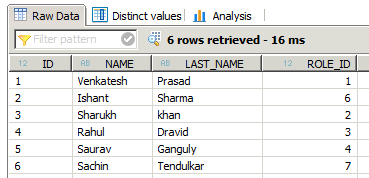Now we can have multiple discussions. As we know that achieving with UNION is better than JOINS. But again it depends on the volumes of the data and the place at which you are applying it.
As per our experiences, we also know that if we can achieve with the help of Attribute /Analytic Views it is better than doing the same with Calculation View Graphical / SQL. In this document i have tried to achieve with Attribute views as much as possible and while doing this i came to know about the Full Outer Join option through graphical models is not possible anymore.
These are 7 questions on which Jody has discussed,
Here are our Tables:
Table 1:
Table 2:

